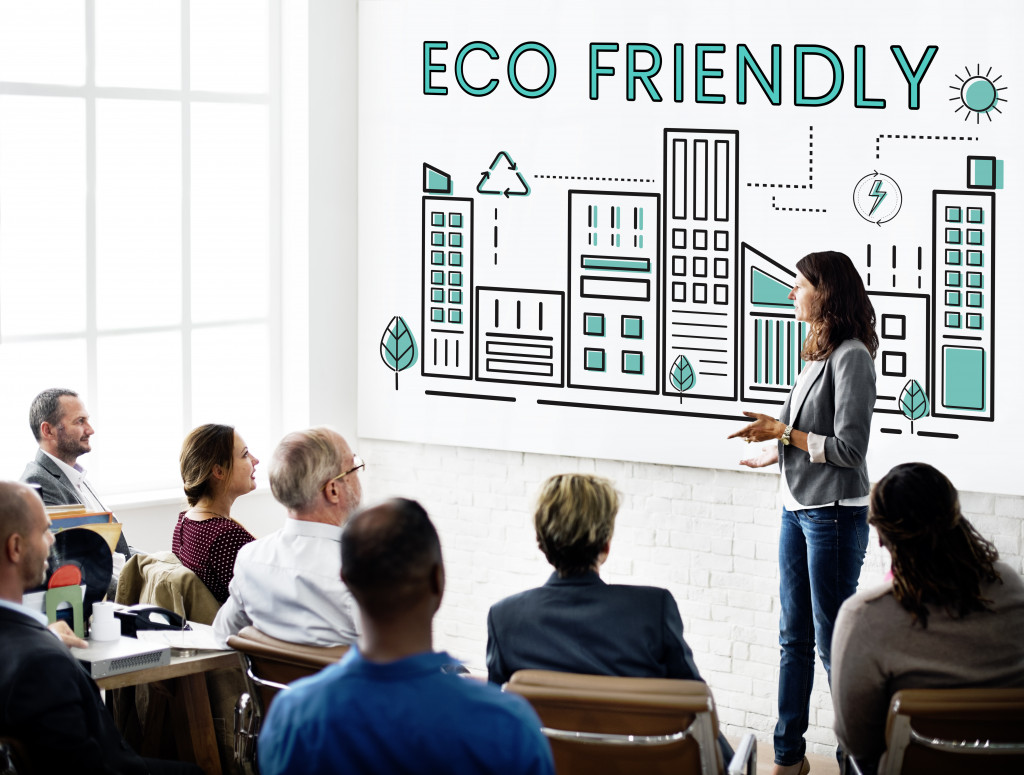Environmentally friendly choices are fast becoming the norm for many households. As the number of products that support green options and sustainable ways becomes more easily available, it is becoming the cheaper option in many ways as well. It might feel like it’s easier to live green by building a sustainable home from the ground up by buying land with a developer such as Donnybrae. But it is very much about the lifestyle you have in your home that keeps it a sustainable house.
Green living is often in the choices we make for our everyday lives, purchasing choices, and energy usage. It is entirely possible to be comfortable and still be environmentally friendly. Making a meaningful change to your lifestyle does not mean you have to give up things you enjoy. It means that you make the effort to find a sustainable way to enjoy things. Let’s take a look at a few of the ways you can make choices for your home that help you to reduce your carbon footprint and makes your home a sustainable haven.
Solar Panels
Solar panels are expensive to install upfront but save you money in the long term. They can give you hot water all day and even retain enough power in the batteries to charge your devices every night. Plus, using the energy from the solar panels reduces your utility costs and fossil fuel consumption.
Cleaning Products
Switch to cleaning products made by companies that avoid synthetic ingredients and utilize as many natural ingredients as possible. Mass-produced cleaning products create a lot of waste that can be harmful to the environment. Sustainably sourced, organic ingredients do not harm plant or animal life and can even be healthier options for your skin and anti-allergenic.
Bathing Products
We may not think that the products we use for shampoo, conditioner, soap, make-up, etc are bad for the environment because they are made for human use. But you will be surprised to learn that there are many chemicals in these products that are actually toxic to wildlife, contribute to pollution, and can be quite bad for you in the long term.
Glitter and the micro-plastics in scrub soaps do not break down and can last long enough to be ejected into the ocean. This then gets eaten by fish and other sea creatures, finding its way back into our food chain. Sulfides, parabens, and even formaldehyde can be found in mass-produced shampoos and soaps. These ingredients could very well be the cause of your skin ailments even more than they are helping to ease them.
Switch to soaps and shampoos made from non-synthetic ingredients. Support local businesses that produce handmade, sustainable products in small batches so that you know it is fresh and organic. It might cost a bit more but your health and the environment are worth more than the savings of buying cheap and harmful bath products.
Bamboo Tissue Paper

Toilet paper and kitchen towels made from bamboo are much more sustainable than regular toilet paper and tissues made from trees. The bamboo takes much less time to grow and is produced with a lot fewer chemical ingredients. Save the trees by making the switch to bamboo tissue paper. Many people also advocate for doing away with paper altogether and switching over to bidets.
But this is not always possible and can even be very expensive with local sanitation guidelines and restrictions. That said, the best of all possible options may simply be to use a more Eco-friendly version of the item you just cannot do without.
Avoid Fast Fashion
Fast fashion is contributing a significant amount of pollution and waste to the environment. Most of these clothes are made from synthetic fibers that do not decompose easily and simply fill up rubbish dumps. They can produce toxic chemicals and gases when burned so there is no easy solution to reducing the waste these clothes produce. The only way to ensure they are not produced is to not buy them. When the demand disappears, the unscrupulous manufacturers will stop producing the clothes because they are no longer making money.
Use your buying power to support local businesses selling sustainable clothing. Purchase clothes from thrift stores or buy locally produced textiles and support local tailors by having them sew clothes for you. This will not only be a better use of your money, but it will also result in clothes that last longer, do not fade easily, and unlike fast fashion clothes, don’t break down after a few washes.
Most of these ideas are fairly easy to enforce and do not require much financial investment from you. After trying these out for a while, you may find that you want to invest more in converting to a fully sustainable lifestyle.
This is where you look into things like replacing your gas-guzzler car with an electric car or a hybrid. Smart home devices and environmentally friendly appliances are also a great investment and not as expensive as a new car. There are many wonderful ways to led a sustainable lifestyle, you simply have to find the first step you feel like making.




